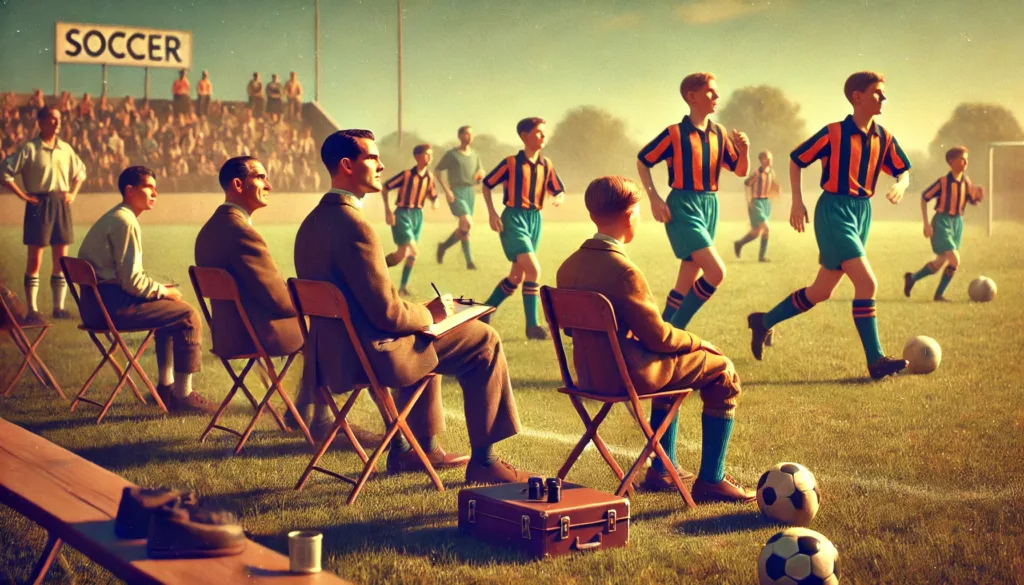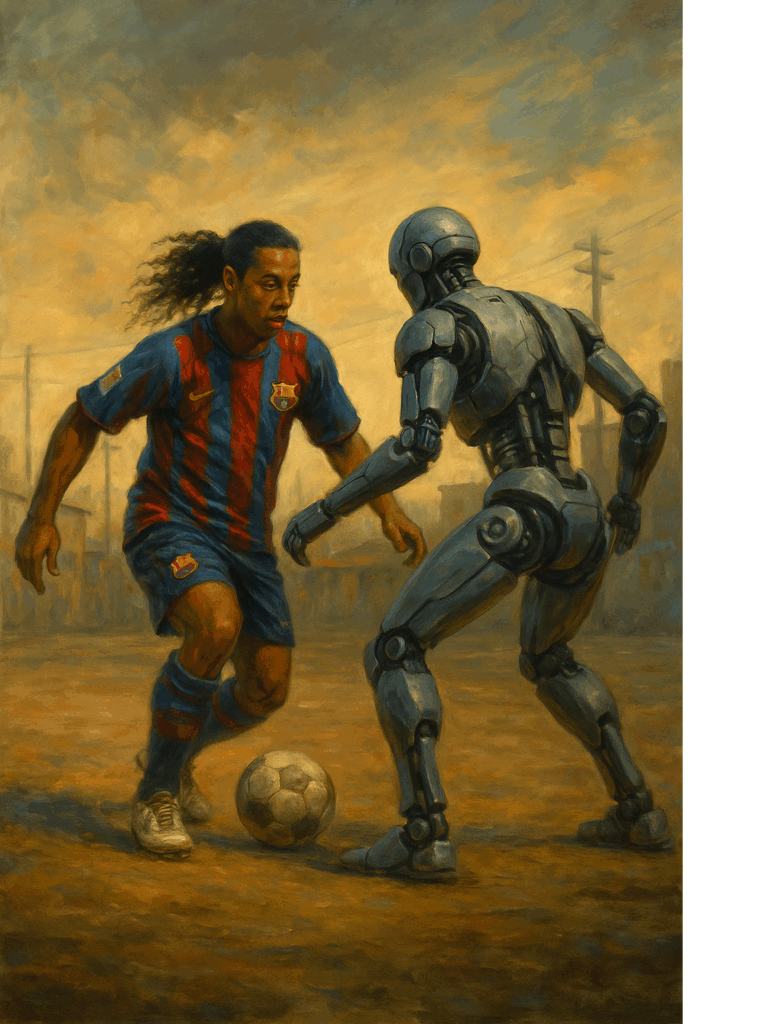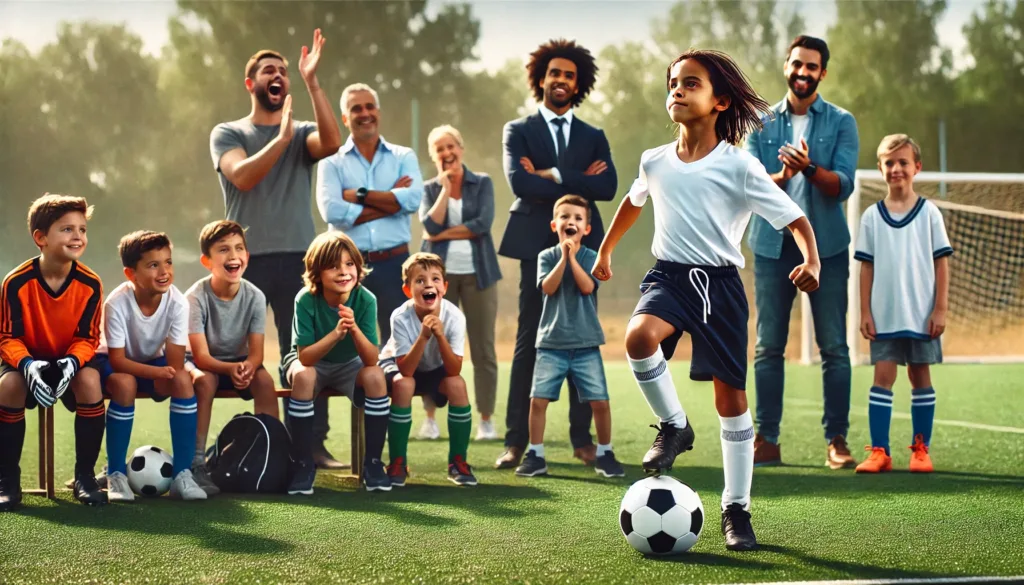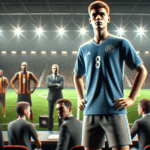
Are We Raising Robots Instead of Artists?
🧠 Introduction: A Game Once Played, Now Programmed
“Football is simple, but the hardest thing is to play simple.”
— Johan Cruyff
Once upon a time, the world’s greatest footballers were born on the streets. They learned the game not from coaches or cones — but from chaos. They played barefoot. They played for hours. And they played without fear.
Today, we are facing Over-Coaching in Youth Football: most children don’t “play” football — they “attend” it. Structured sessions. Drills. GPS vests. Pattern repetition. Tactical compliance. Everything is optimized. Everything is calculated.
But here’s the question:
In the obsession with creating the “complete player,” have we stopped creating the magical one?
📜 The Evolution: From Streets to Systems
Decades ago, legends like Pelé, Cruyff, and Maradona developed in organic, unregulated environments. They invented solutions in real-time. They mastered balance, creativity, deception — because the streets demanded it.
But from the late 1990s onwards, youth academies became industrialized. The English FA’s Elite Player Performance Plan (EPPP), Spain’s La Masia model, and Germany’s post-2000 revolution emphasized structured development, positional training, and systems thinking. These efforts improved team performances.
But individual expression? It became a casualty.
👨🎨 Player Biographies: Artists vs Engineers
🎨 Ronaldinho – The Magician of Joy
- Upbringing: Streets and futsal courts of Porto Alegre, Brazil
- Style: Inventive, joyful, unpredictable
- Legacy: Combined samba, street cunning, and absurd creativity
“He made you fall in love with football again,” – Frank Lampard
Ronaldinho was untameable. In today’s structured academy, he may have been told to “pass earlier” or “stop showboating.” But his magic was born from futsal — tight spaces, no coaches, just instinct.
🧙♂️ Luka Modrić – The Street Survivor
- Upbringing: War-torn Zadar, Croatia
- Style: Spatial awareness, intelligent movement, perfect weight of pass
- Legacy: Dictated games through rhythm, not muscle
Modrić didn’t grow up with cones — he learned timing and toughness dodging war. His development was unstructured, shaped by adversity. He’s not the product of a plan — but of survival and improvisation.
🧊 Zinedine Zidane – The Street Philosopher
- Upbringing: Marseille’s La Castellane housing project
- Style: Elegant, rhythmic, deceptively powerful
- Legacy: Combined street soul with Galáctico genius
Zidane’s creativity came from the street games of Marseille, where controlling a ball was survival. His famous roulette wasn’t taught — it was invented. In today’s academy, would they have reined him in?
🧢 Leo Messi – Futsal King Turned System Breaker
- Upbringing: Rosario, Argentina
- Style: Close control, balance, relentless improvisation
- Legacy: Greatest ever dribbler, but born in futsal and play
Messi’s genius was shaped by futsal and small-sided games. La Masia refined his brain — but the chaos of his early years gave him freedom. Without unstructured play, Messi would be a polished talent — but not Messi.
🎯 Kylian Mbappé – New Era, Same Street
- Upbringing: Suburbs of Bondy, France
- Style: Explosive, fearless, direct
- Legacy: Modern superstar who escaped the system
Mbappé’s father was a coach, but his early training was on playgrounds. He merged raw speed with fearless 1v1 play — not from drills, but duels with friends. He’s the rare modern player who still plays like he’s on the street.
📊 Over-Coaching in Youth Football: The Decline of Free Play
According to UEFA and FIFA grassroots reports:
- 📉 80% of training hours for elite youth are coach-led
- 📉 Street football has dropped by 90% in major cities in 20 years
- 📉 Time spent on 1v1 skills in top academies is now under 10%
And here’s the paradox:
The very skills we worship in pro football — improvisation, dribbling, unpredictability — are the ones we suppress in youth football.
🎙️ Voices of Dissent: Experts Sound the Alarm
Arsène Wenger (ex-Arsenal Manager, FIFA Global Development Chief):
“We are losing the street player — the one who learns with imagination and instinct.”
Xavi Hernández:
“You can teach tactics, not creativity.”
Gareth Southgate (England Manager):
“We’ve probably gone too far in making football a curriculum.”
Eric Cantona:
“You don’t play football with your feet — you play with your soul.”
Even clubs like Ajax and Barcelona — pioneers of total football — are questioning the cost of their own structures.
🧠 Neuroscience + Football: Why Chaos Builds Geniuses
Has Structure Killed the Football Brain?
For decades, youth academies across the world have idolized structure: well-designed drills, synchronized movements, and robotically executed game plans. But what if this obsessed Over-Coaching in Youth Football with order is killing the very thing football truly celebrates — creativity, instinct, genius?
Recent studies in neuroscience, including research from the University of Groningen and FIFA Medical Centre of Excellence, point to a disruptive truth:
Chaos—not structure—builds football intelligence.
🧩 The Science Behind It: Your Brain on Football
The brain is a prediction machine. It learns by responding to novelty, surprise, and uncertainty — not repetition. Here’s what happens in different football environments:
🛹 1. Random, Unstructured Play Builds Adaptive Thinking
- Street football, cage games, or spontaneous 3v3s are unpredictable.
- The brain is forced to make split-second decisions, activating areas responsible for cognitive flexibility, working memory, and executive function.
- According to a 2023 study at the University of Groningen, children who engage in free-form football score higher on neuro-adaptability tests — key for dealing with real-game chaos.
🧠 2. 1v1 Duels Boost Neuroplasticity
- In isolated 1v1 scenarios, especially in tight spaces, players must process visual and spatial information rapidly.
- This constant challenge accelerates neuroplasticity — the brain’s ability to rewire itself.
- The brain learns how to create new solutions under pressure, which is precisely what separates the good from the great.
⚠️ 3. Rigid, Repetitive Training Increases Performance Anxiety
- Controlled drills may improve short-term technique, but they suppress exploration.
- Neuroscience shows that environments with low variability actually increase cortisol (stress hormone) when unpredictability inevitably hits — like in a real match.
- In structured academies, players often struggle with improvisation, displaying freeze responses under pressure.
🔁 Street Football vs. System Football: Key Differences
| Element | Street Football | System Football |
|---|---|---|
| Environment | Unpredictable | Controlled |
| Coaching | None | Intense |
| Rules | Flexible | Rigid |
| Creativity | Encouraged | Often discouraged |
| Skill Development | Self-taught | Drill-based |
| Motivation | Fun, social, spontaneous | Competitive, structured |
🎮 A Future of Digital Footballers?
Today, many kids play more FIFA or Fortnite than actual football. With virtual coaching, eSports, and VR training coming, the risk is clear:
We’re replacing the chaos of the street with the code of the screen.
Football has always evolved — but if we forget its soul, we lose what made it magical in the first place.
🔄 A Way Forward: Rewilding the Game
If we want more artists, not just athletes:
- 🎯 Bring back street-style tournaments and futsal
- 🔓 Reduce adult interference in early play
- 🤸 Let kids take risks and fail creatively
- 🎨 Encourage individual flair over system conformity
- 🕹️ Limit over-analysis and focus on joy
Let football breathe again.
🧠 Final Thought: Football is Art, Not Engineering
“The streets made me.” – Ronaldinho
“What you do without thinking — that’s football.” – Zidane
The world needs more dreamers. More players who dare to try the impossible — not because it’s in the playbook, but because it feels right.
Let’s raise less robots.
Let’s raise more magicians.










